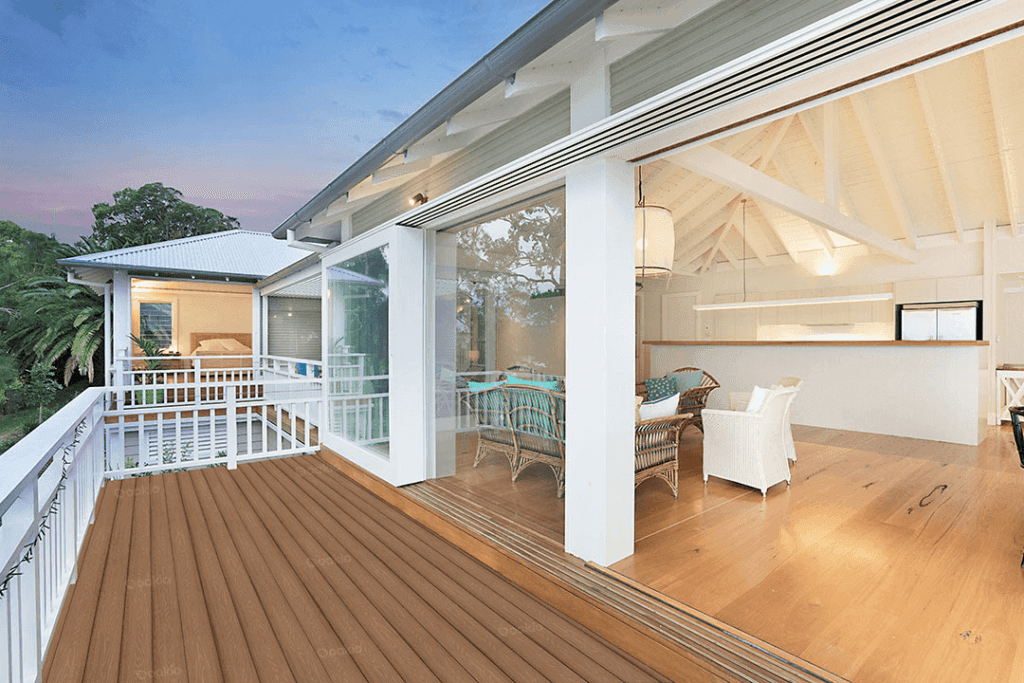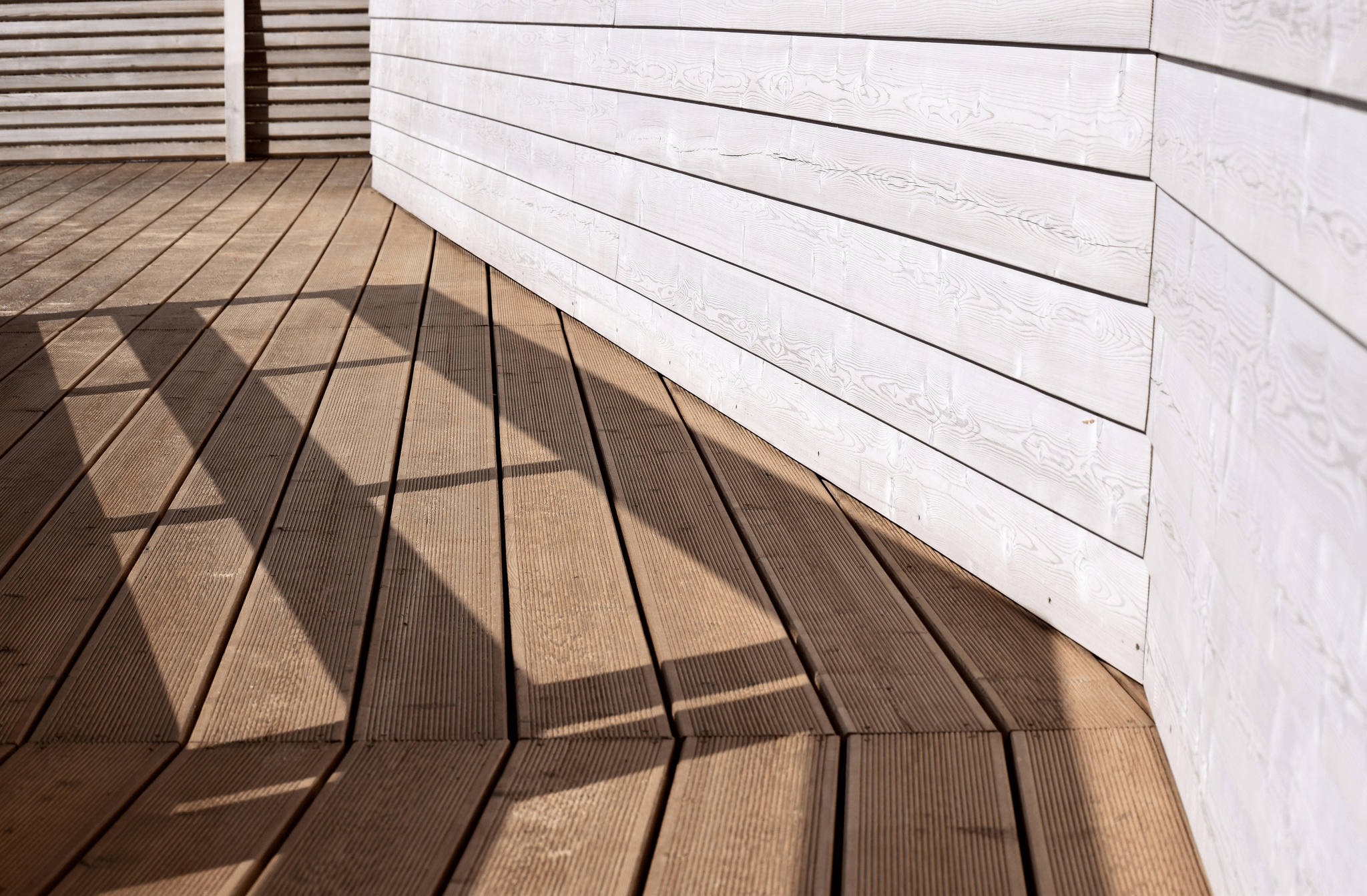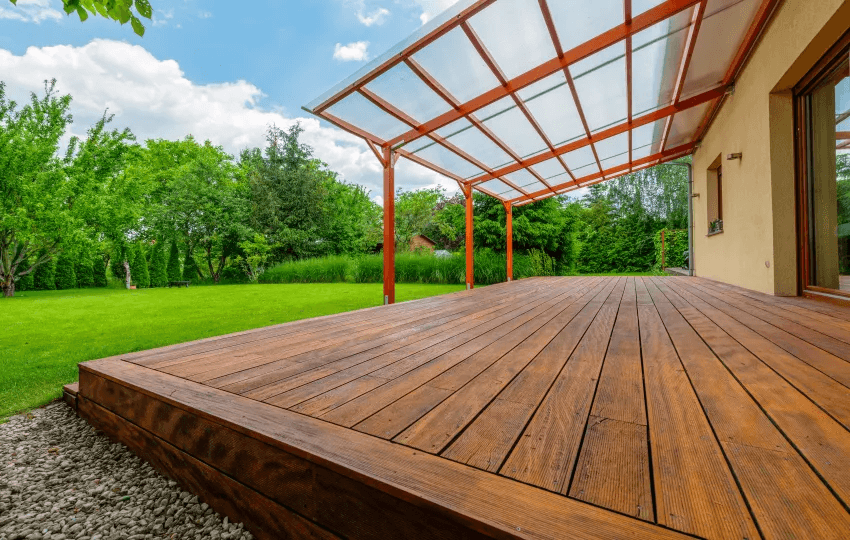Introduction

Understanding Joist Spacing Importance
Joist spacing is a fundamental aspect of any deck's construction, especially when using composite lumber decking. The distance between the decking joists composite directly affects how well your deck can handle weight and resist sagging over time. Getting this spacing right ensures that your composite decking remains strong and visually appealing for years to come.
Selecting the Right Materials
Choosing high-quality materials is vital when planning your deck, particularly with options like composite decking that offer durability without sacrificing aesthetics. Composite lumber decking provides an excellent alternative to traditional wood, boasting resistance to rot, splintering, and fading while still delivering a beautiful finish. Pairing the right materials with proper joist spacing for composite decking creates a solid foundation that enhances both performance and appearance.
Tips for Optimal Decking Performance
To maximize the lifespan of your deck, it's essential to follow best practices in installation and maintenance. Ensure that you adhere to recommended joist spacing guidelines specific to composite decking; this will help distribute weight evenly across the structure. Additionally, regular inspections and timely repairs will keep your composite decking looking great while preventing minor issues from escalating into major problems.
Joist Spacing Basics

Standard Spacing Guidelines
Standard guidelines for joist spacing typically range from 12 to 16 inches on center, depending on the type of decking material used. For composite decking, many manufacturers recommend a maximum spacing of 16 inches to ensure adequate support and longevity of the deck. When following these standard guidelines for your composite decking joists, you not only enhance stability but also reduce the risk of sagging or warping over time.
Factors Affecting Joist Placement
Several factors can influence the placement of your decking joists composite beyond just standard measurements. The expected load on the deck—such as heavy furniture or frequent gatherings—can necessitate closer spacing between joists for added support. Additionally, local climate conditions like snow loads or high winds may require adjustments in your joist spacing to ensure that your composite decking remains safe and functional throughout its lifespan.
The Role of Load-Bearing Capacity
The load-bearing capacity is a critical factor when determining appropriate joist spacing for composite decking. Each type of material has specific weight limits that dictate how far apart you can place your joists without risking structural integrity. By understanding these limits and calculating the anticipated load on your deck accurately, you can make informed decisions about your framing layout, ensuring that your composite lumber decking stands strong against time and nature's elements.
Best Practices for Composite Decking

One of the most critical aspects to consider is joist spacing for composite decking, which directly impacts the structural integrity and performance of your deck. By adhering to recommended guidelines and utilizing high-quality materials, you can ensure a durable and stable foundation for your composite lumber decking.
Recommended Joist Spacing for Composite Decking
The recommended joist spacing for composite decking typically ranges from 12 to 16 inches on center, depending on the specific product you choose and its load-bearing capacity. Closer spacing can provide additional support, particularly in regions with heavy snowfall or high foot traffic, while wider spacing may suffice in milder climates. It's crucial to consult the manufacturer's guidelines for your specific composite decking material; they often provide detailed information about optimal joist placement tailored to their products.
By following these recommendations, you can prevent issues such as sagging or warping that may arise from inadequate support. Moreover, proper joist spacing enhances the overall appearance of your deck by ensuring that the surface remains even and stable over time. Remember that taking these precautions not only maximizes your investment but also contributes to a safer outdoor environment.
Benefits of Composite Lumber Decking
Composite lumber decking has gained popularity due to its numerous advantages over traditional wood options. One significant benefit is its low maintenance requirement; unlike wood decks that need regular staining and sealing, composite decking simply requires occasional cleaning with soap and water. This means more time enjoying your outdoor space rather than maintaining it!
Another advantage is durability; composite materials are designed to resist fading, staining, and mold growth—making them ideal for various climates and weather conditions. The combination of recycled materials in many composite products also offers an eco-friendly alternative without compromising on aesthetics or performance. With beautiful finishes available that mimic natural wood grain, homeowners can achieve their desired look while benefiting from enhanced longevity.
Ensuring Stability with Composite Decking Joists
To ensure stability with composite decking joists, it's vital to select sturdy materials specifically designed for this purpose—typically pressure-treated lumber or engineered wood products work best as they offer excellent strength-to-weight ratios. Additionally, proper installation techniques play a critical role in achieving a stable structure; make sure each joist is securely anchored and level before laying down your decking boards.
Regular inspections are essential too; check for signs of wear or damage around your decking joists composite periodically to catch any potential issues early on. Addressing concerns promptly can prevent costly repairs down the line while ensuring continued safety during use! With careful planning and attention to detail regarding joist spacing for composite decking, you'll create an inviting outdoor area that's built to last.
Regional Considerations in Joist Spacing

When planning your composite decking project, it's crucial to consider regional factors that can influence joist spacing. Different climates and local regulations can significantly affect how you design and construct your deck. Understanding these elements ensures that your composite decking not only looks great but also performs well over time.
Adjustments for Climate and Weather
Climate plays a pivotal role in determining the appropriate joist spacing for composite decking. In areas with heavy snowfall or intense rainfall, you may need to reduce the spacing between the decking joists composite to enhance load-bearing capacity and prevent sagging. Conversely, in warmer, drier climates, slightly wider spacing might be acceptable, but always consult local guidelines to ensure compliance.
Additionally, temperature fluctuations can cause materials to expand and contract; therefore, proper joist spacing is essential for accommodating these changes without compromising structural integrity. The right adjustments based on climate conditions will help maintain the durability of your composite lumber decking over time while minimizing maintenance needs. Ultimately, a well-planned approach ensures that your outdoor space remains safe and enjoyable regardless of weather conditions.
Local Building Codes and Regulations
Before embarking on any decking project, it's essential to familiarize yourself with local building codes regarding joist spacing for composite decking. These codes are designed to ensure safety and structural integrity while taking into account regional weather patterns and soil types. Ignoring these regulations could not only lead to safety hazards but also result in costly fines or required modifications down the line.
Most building codes specify minimum requirements for load capacities based on expected usage of the deck area; this includes factors such as furniture placement or foot traffic levels. Adhering strictly to these guidelines when installing composite decking joists will provide peace of mind knowing your structure is built safely and soundly according to established standards. Always check with local authorities before finalizing your design plans—it's worth it!
How Terrain Impacts Deck Design
The terrain where you plan to install your deck can significantly impact both its design and the necessary joist spacing for optimal performance. For instance, if you're working on sloped land or uneven ground, you'll need a thoughtful approach that considers how this affects stability and drainage around the deck structure. Properly addressing terrain challenges ensures long-term durability of both the composite lumber decking itself as well as its supporting framework.
Moreover, different terrains may require specialized support systems or additional reinforcement within the framework of your deck’s design—this could mean adjusting standard spacings or even using more robust materials altogether! By recognizing how terrain interacts with construction techniques early in the planning phase, you'll create a solid foundation that effectively supports all aspects of your outdoor living space while beautifully showcasing those stunning composite materials from Composite Decking Inc.
Tools and Techniques for Accurate Measurements

Accurate measurements are crucial when planning joist spacing for composite decking. The right tools and techniques not only ensure that your project adheres to standards but also enhance the overall quality of your composite lumber decking. With a few essential measuring tools and some savvy techniques, you can achieve precision in every aspect of your decking joists composite installation.
Essential Measuring Tools for Contractors
When it comes to measuring for joist spacing for composite decking, having the right tools is half the battle won. A good quality tape measure is essential; a 25-foot model typically provides enough length for most deck projects. Additionally, a laser level can help ensure that your composite decking joists are perfectly aligned, while a framing square will assist in maintaining right angles during installation.
For those who prefer technology, digital measuring devices can provide quick and accurate readings, reducing human error significantly. Don’t forget about chalk lines; they’re invaluable for marking straight lines over long distances on your deck surface or joists. With these essential measuring tools at hand, you’ll be well-equipped to tackle any decking project with confidence.
Common Measurement Mistakes to Avoid
Even seasoned contractors can fall victim to measurement mistakes that could jeopardize the integrity of their composite decking installation. One common error is neglecting to account for the width of the boards when calculating joist spacing; this can lead to uneven gaps and an unsightly finish on your composite lumber decking. Another mistake is failing to double-check measurements before cutting—measuring twice and cutting once should be your mantra!
Additionally, overlooking local building codes related to joist spacing can result in compliance issues down the line, so stay informed about regulations in your area. Lastly, don’t forget about environmental factors like slope or terrain changes that may affect how you space those decking joists composite! Being vigilant about these common pitfalls will save you time and headaches later on.
Techniques for Achieving Precision
To achieve precision in measuring and installing joist spacing for composite decking, consider using a systematic approach throughout your project. Start by marking out all critical points on both ends of where each joist will sit; this creates reference points that guide your work as you proceed with installation. Using spacers between boards during assembly ensures consistent gaps while allowing room for expansion—a crucial factor when working with composite materials.
Another effective technique involves using a story pole: a long piece of wood marked at intervals corresponding to desired measurements allows you to quickly transfer dimensions across large areas without needing constant re-measurement with tape or other tools. Finally, always keep an eye on leveling as you install each section—using adjustable brackets or shims can help fine-tune any discrepancies along the way! With these techniques under your belt, you'll be well-prepared to create stunning decks that stand up against time.
Maintenance Tips for Long-lasting Decks

Maintaining your deck is crucial to ensure its longevity and performance, especially when using composite materials. Regular inspections can help identify issues early, allowing you to address them before they escalate into costly repairs. By prioritizing maintenance, you can enjoy a beautiful outdoor space that remains safe and functional for years to come.
Importance of Regular Inspections
Regular inspections are vital for any decking system, particularly with composite lumber decking, which is designed for durability but not invincibility. Checking your deck every season helps catch potential problems like loose boards or compromised joist spacing for composite decking before they become serious issues. By being proactive, you can save yourself time and money while ensuring the safety and aesthetics of your outdoor space.
Signs of Wear in Decking Joists Composite
Look for sagging or uneven surfaces, which could indicate improper joist spacing or support failure beneath the deck boards. Additionally, any visible cracks or splintering in the composite decking itself can signal that it's time to take action before further damage occurs.
How to Address Common Issues
Addressing common issues with your composite decking doesn’t have to be a headache if you know what steps to take. For minor wear on the surface of your deck boards or joists, a thorough cleaning followed by a protective sealant application can work wonders in extending their life span. If more significant problems arise—like warped joists due to inadequate spacing—consider consulting with professionals at Composite Decking Inc who specialize in creating beautiful and sustainable solutions tailored specifically for your needs.
Conclusion
In wrapping up our exploration of joist spacing for composite decking, it’s clear that this element is crucial for ensuring a safe and durable outdoor space. The future of composite decking solutions looks bright, with ongoing innovations leading to even more resilient and sustainable materials. Homeowners and builders alike can look forward to enhanced options that not only meet but exceed expectations in performance and aesthetics.
The Future of Composite Decking Solutions
The landscape of composite decking is evolving rapidly, with manufacturers continually developing new technologies to improve performance and longevity. As we move forward, expect to see advancements in the durability of composite lumber decking, making it an even more attractive choice for outdoor projects. This innovation will also address common concerns around maintenance and environmental impact, ensuring that composite decking remains a top contender in the market.
Investing in Quality for Longevity
High-quality composite decking not only enhances the visual appeal but also ensures that your investment stands strong against time and weather conditions. Choosing reliable products means fewer repairs down the line and a much more enjoyable outdoor experience.
Partnering with Composite Decking Inc for Success
At Composite Decking Inc, we are passionate about transforming outdoor spaces with high-quality, sustainable decking solutions. By partnering with us, you gain access to an array of products designed specifically with optimal joist spacing for composite decking in mind. Our commitment to quality ensures that your project will be built on a foundation of durability and style—because when it comes to building your dream deck, settling for anything less than the best simply won't do.
